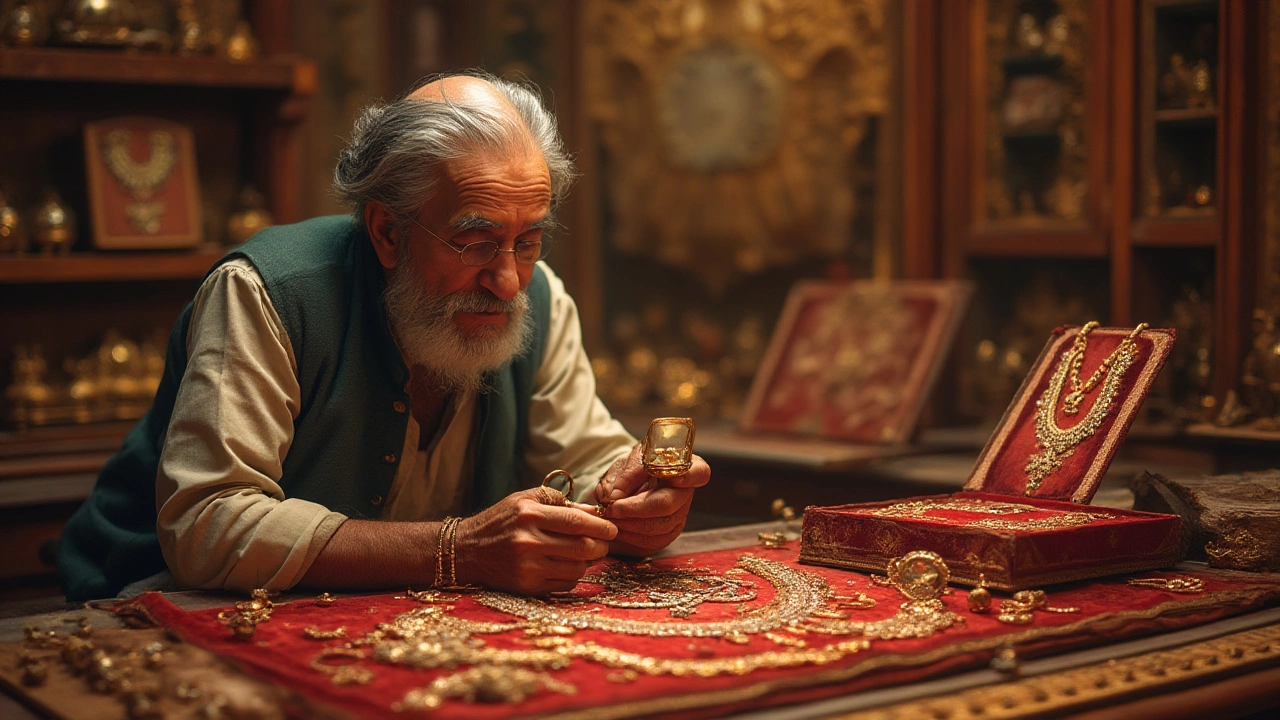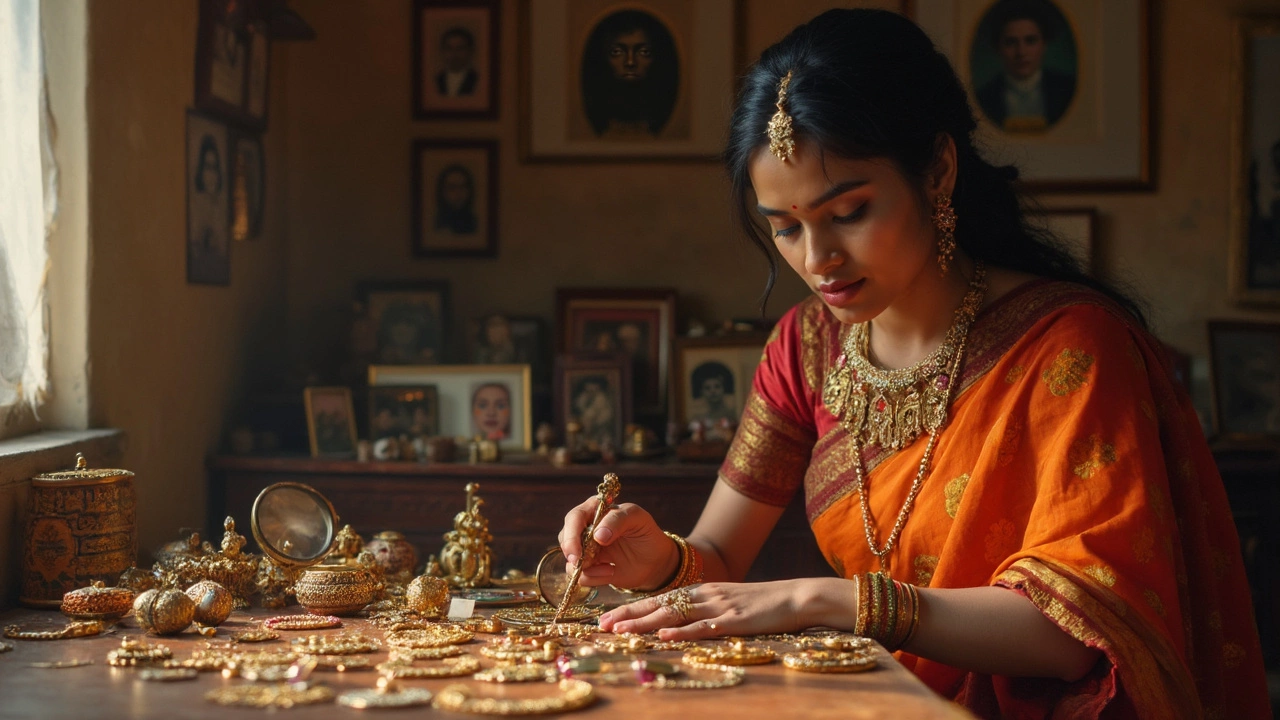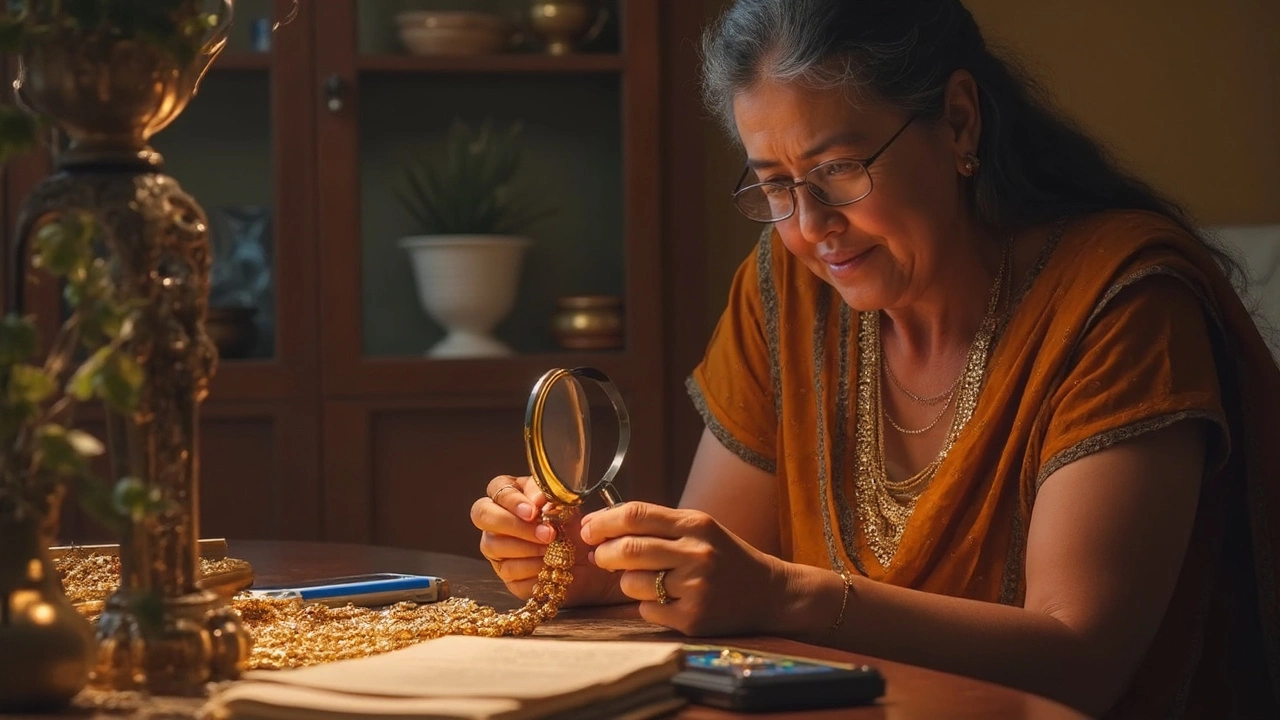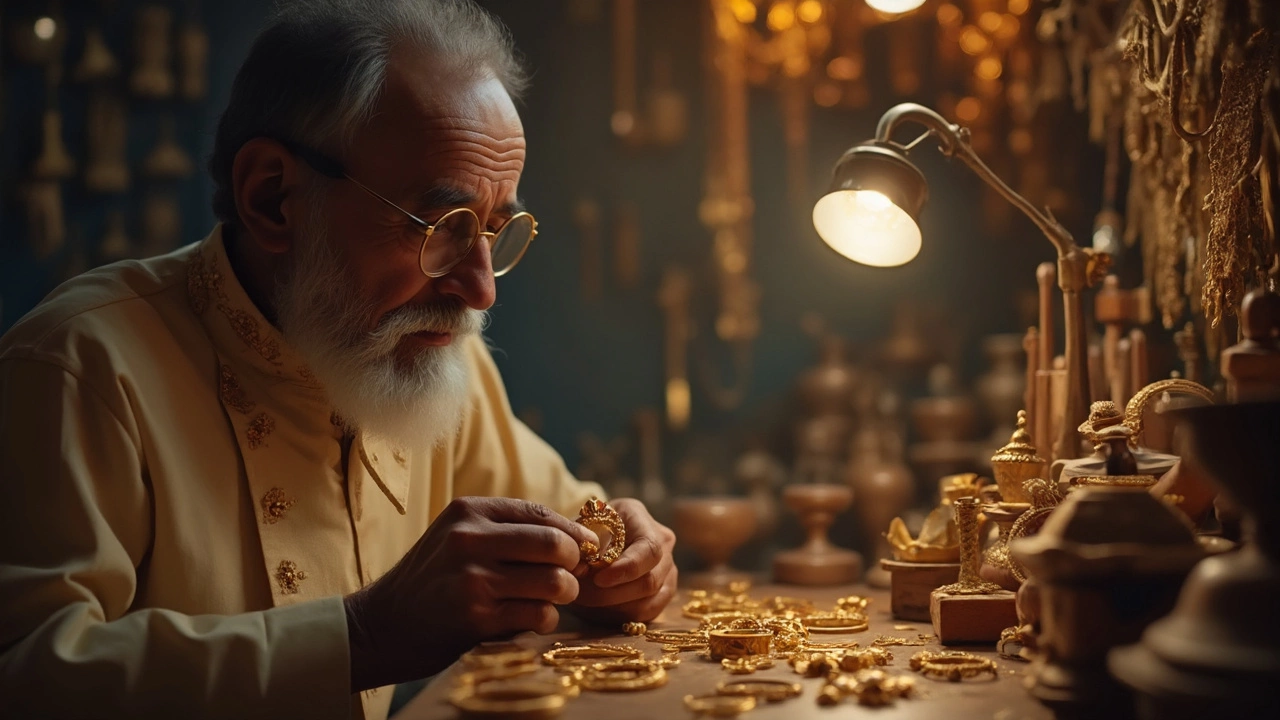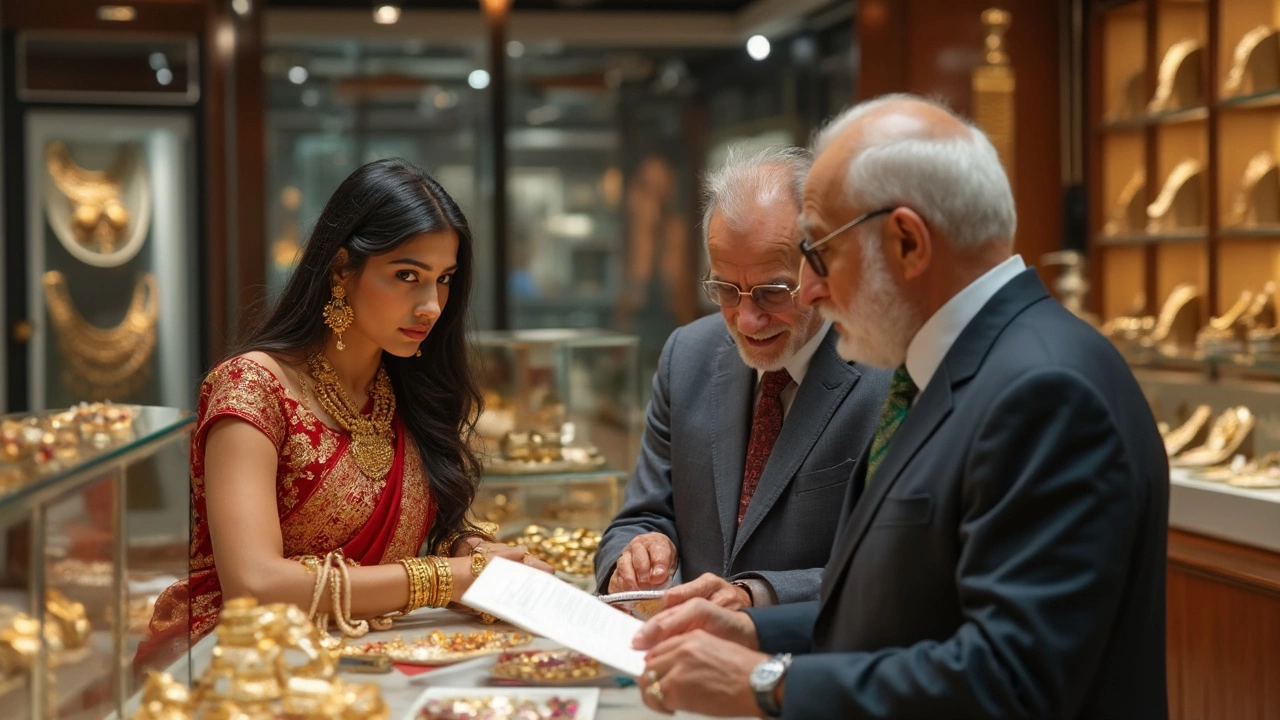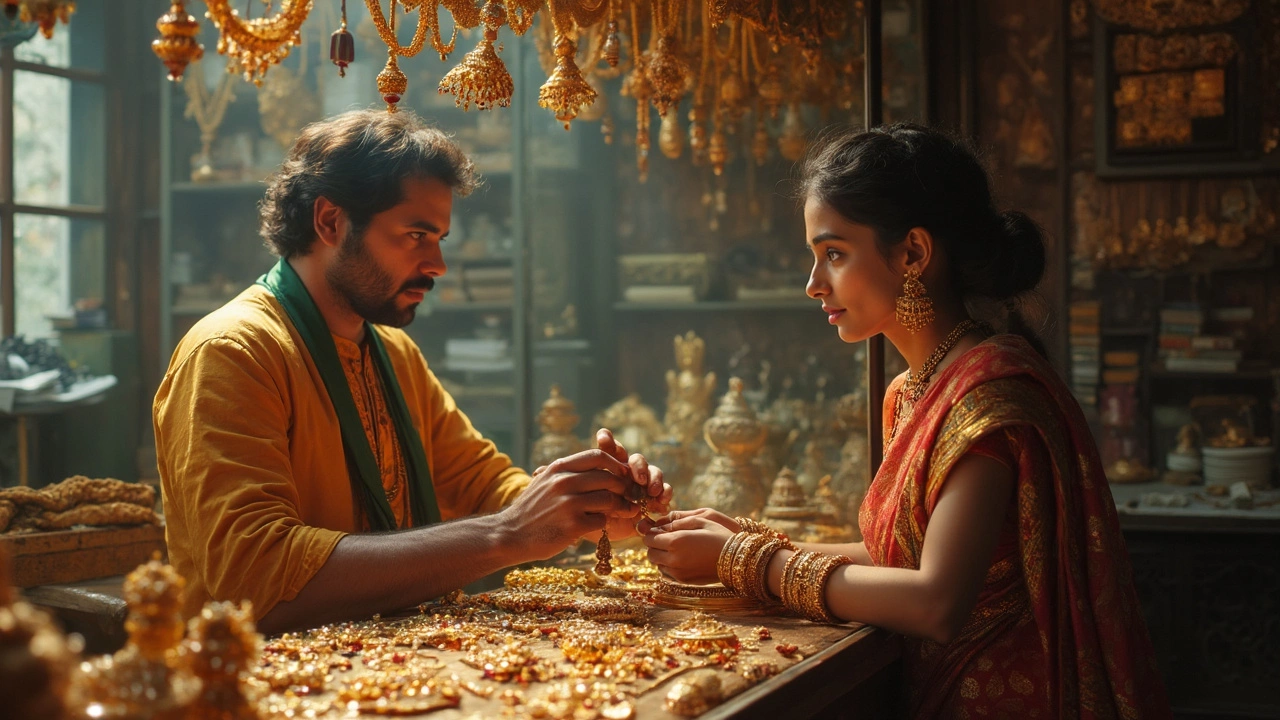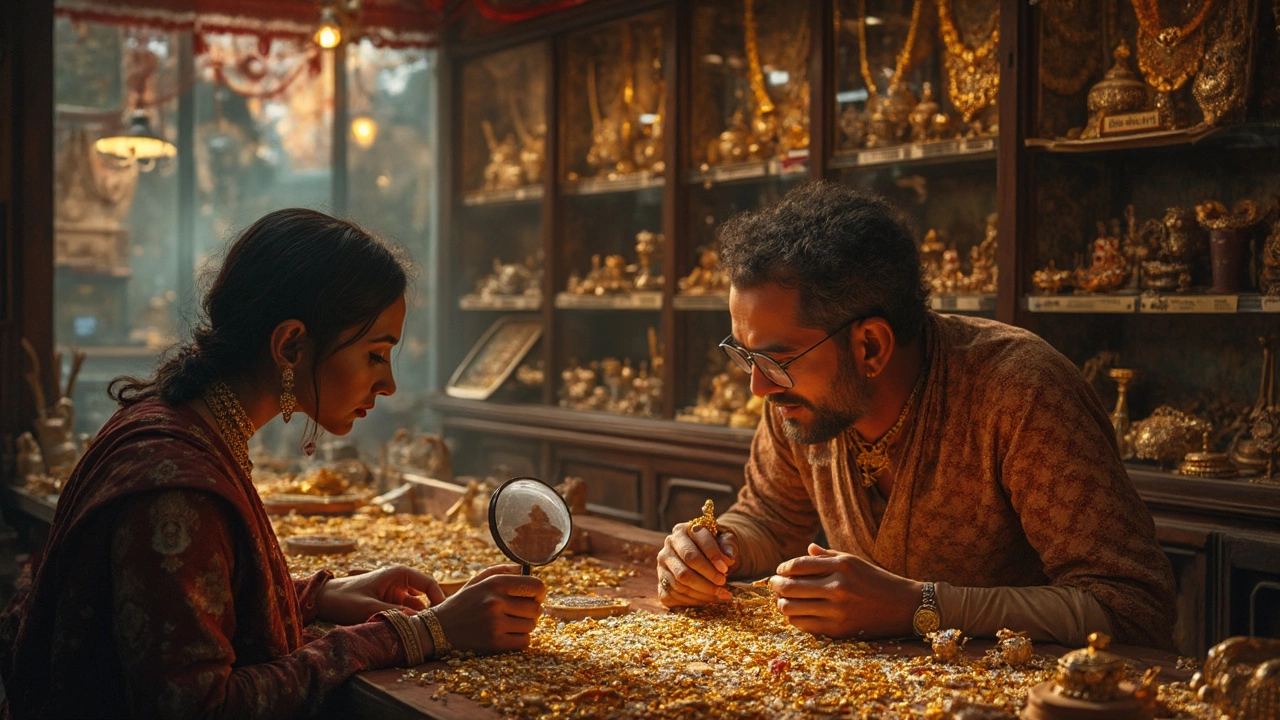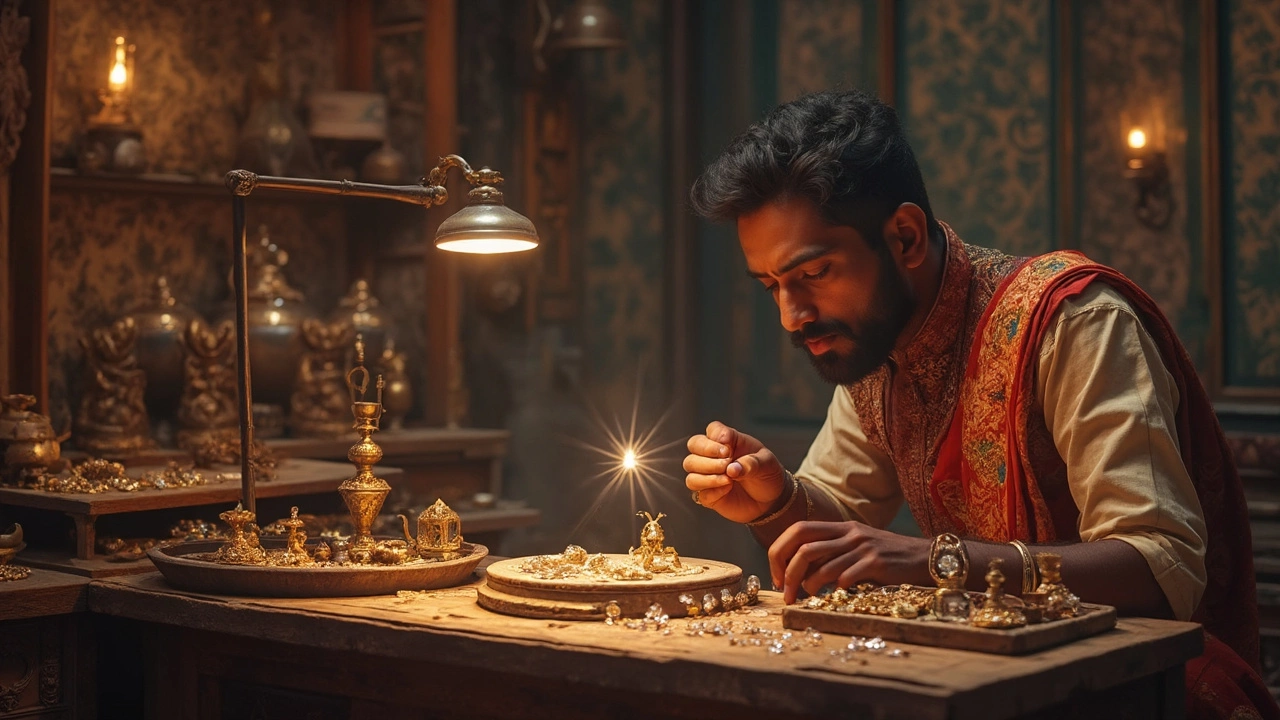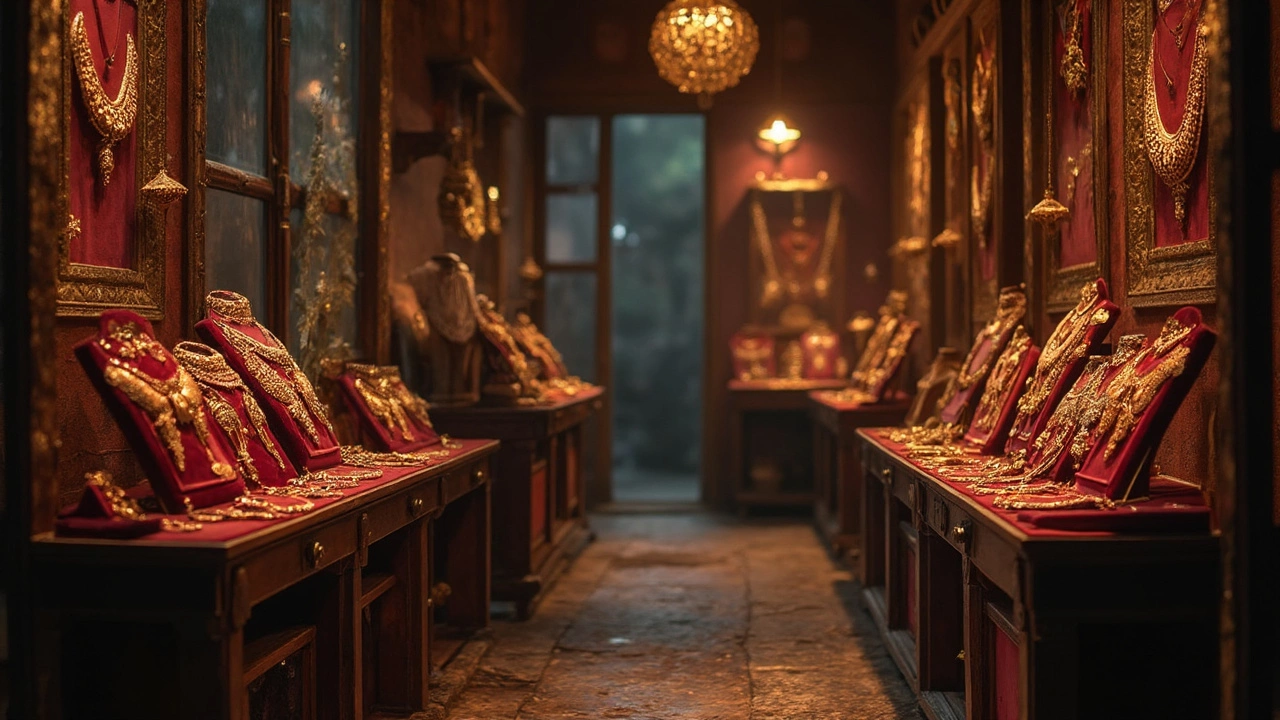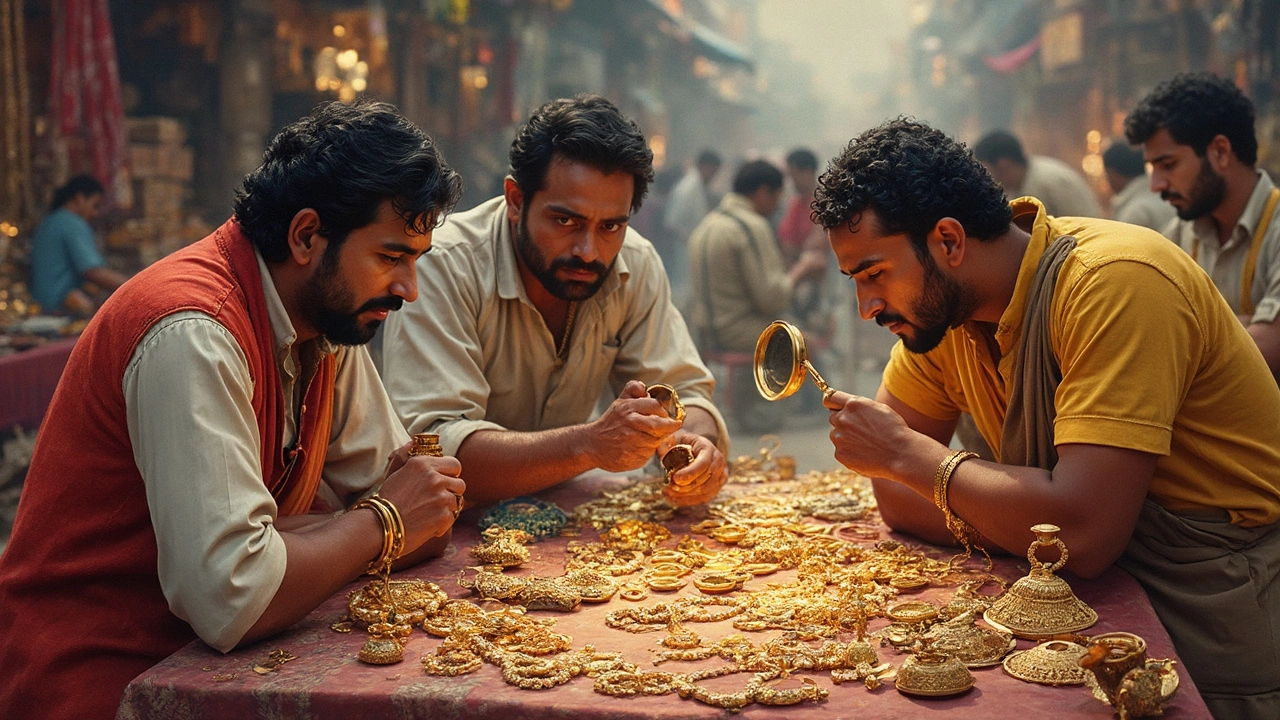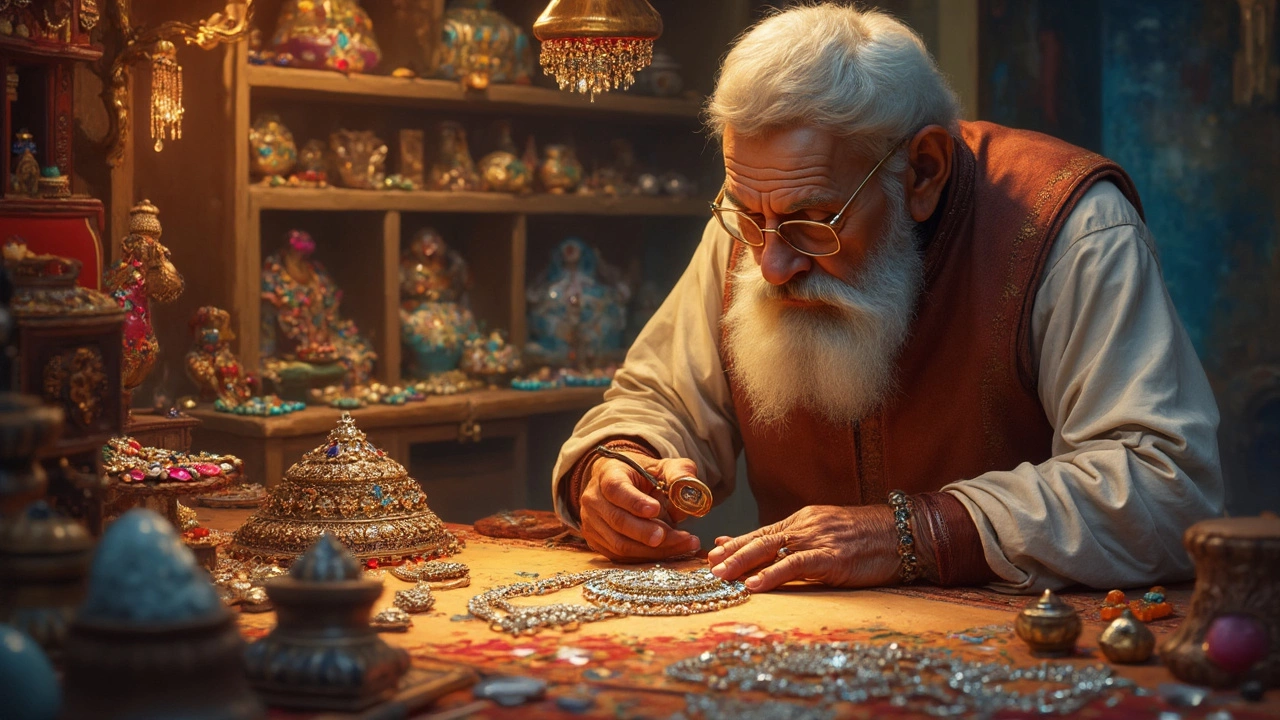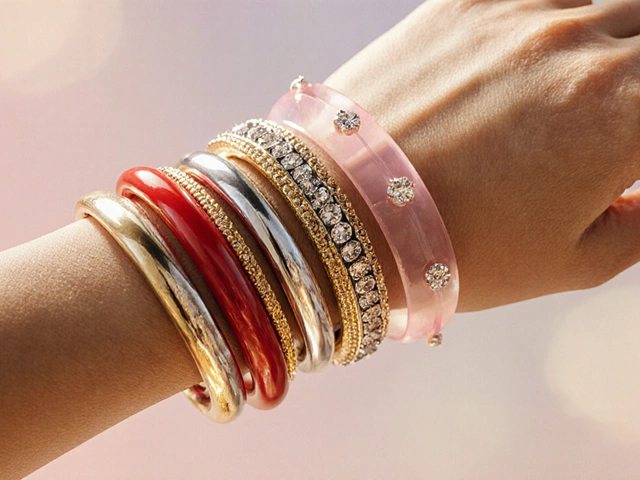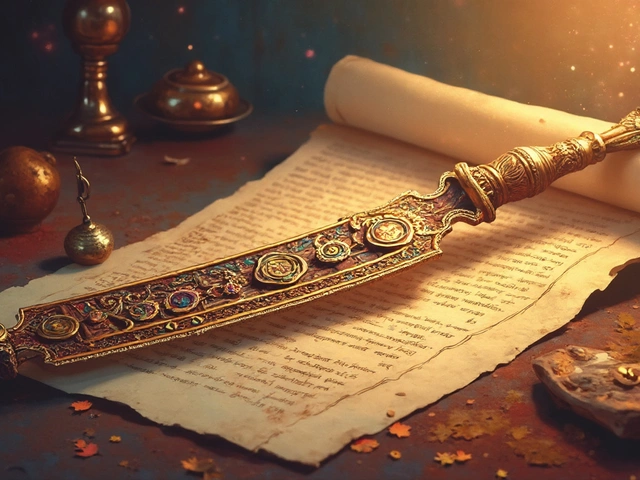Antique Jewelry Designs: What You Need to Know
Thinking about adding an antique piece to your collection or selling a family heirloom? You’re not alone. People love the story and sparkle that comes with old‑world jewelry, but the market can feel confusing. Below you’ll find straight‑forward advice on spotting genuine antique designs, figuring out what they’re worth, and getting the best deal when you buy or sell.
How to Spot Real Antique Pieces
The first step is to look for the clues that tell you a piece is truly antique. Hallmarks are the easiest giveaway—tiny stamps inside rings or on clasps that show the metal’s purity, the maker’s initials, and sometimes a date code. For example, a "KK" mark often points to a specific Indian goldsmith, while an "N" can indicate a particular era. If you can’t read the marks, compare the font and spacing to known examples online or in reference books.
Next, check the design details. Antique jewelry usually has hand‑crafted elements like intricate filigree, hand‑engraved patterns, or stone settings that look slightly uneven. Modern reproductions tend to be too perfect, with laser‑etched patterns and uniform stones. Also, consider the wear. Genuine antiques develop a patina—a soft, worn look on metal and gemstones—that adds character. If a piece looks brand new, it might be a recent replica.
Getting the Best Price When You Sell
When it’s time to part with an antique, preparation can boost your payout. First, get a professional appraisal. An accredited appraiser will verify authenticity, note any rare hallmarks, and give you a market‑based value. Keep the appraisal report handy—it builds trust with buyers.
Second, clean the piece only if you know how. Over‑cleaning can strip away the patina that collectors love. A gentle dust‑off with a soft brush is usually enough. If you’re unsure, let the appraiser handle it.
Finally, choose the right selling channel. Pawn shops move fast but often pay less. Online platforms and specialty antique dealers usually fetch higher prices, especially if you provide clear photos and the appraisal. Always negotiate based on the appraisal figure, not the first offer you receive.
Whether you’re hunting for a vintage Art Deco brooch or trying to turn a grandmother’s necklace into cash, the key is to stay informed. Look for hallmarks, examine the craftsmanship, and get a solid appraisal before you decide. With these simple steps, you’ll feel confident about the authenticity and value of any antique jewelry design you encounter.
How Old Must Jewelry Be to Be Considered Antique? Modern Guide to Antique Jewelry Age
Wondering what makes jewelry 'antique'? Learn the key age cutoff, insider facts, dating tips, and what separates antique pieces from vintage.
Antique Jewelry: Understanding Demand, Value, and the Modern Market
Explore whether there's a demand for antique jewelry, what drives its value, buying and selling tips, and real data about this fascinating market niche.
Get the Most Money When Selling Antique Jewelry
Trying to cash in on your antique jewelry? This article breaks down exactly how to get the highest price when selling everything from vintage rings to heirloom necklaces. You'll find real tips on spotting true value, getting your pieces appraised, choosing the right selling platform, and understanding the key mistakes that can cost you cash. Plan your sale like a pro and avoid getting ripped off. Make your jewelry work for you, not the other way around.
How to Find Out What Your Jewelry Is Worth: A Hands-On Guide to Antique Designs
Ever wondered about the real value of your old jewelry? This article breaks down clear steps for figuring out what your antique pieces are actually worth. You'll learn where to look for clues, how to avoid costly mistakes, and when to get a professional opinion. Plus, get smart tips on getting the most accurate reading of your jewelry's value. Ideal for anyone sitting on family heirlooms or flea market finds.
KK Mark on Jewelry: What Does It Really Mean?
Ever spotted 'KK' engraved inside a ring or pendant and wondered what it means? This article breaks down the mystery behind the KK mark on jewelry, its origin, and why it appears on antique pieces. Learn how to recognize genuine KK markings, understand their value, and avoid falling for lookalikes. Plus, get tips for collectors and buyers looking for authentic antique finds. Find out how this tiny mark can tell a big story about craftsmanship and history.
Does Kay Jewelers Buy Back Jewelry? Straight Answers You Need
If you’re holding onto old or antique jewelry from Kay Jewelers, here’s what you need to know about their buy-back options. This article breaks down if and how Kay Jewelers might buy back your pieces, what their trade-in policies actually cover, and why antique jewellery owners should read the fine print. Get the facts, learn useful tips, and see what options make the most sense if you’re thinking of selling or trading your jewelry. We’ll even tackle alternative ways to get value from your cherished pieces. Know what to expect before you walk into the store.
Jewelry That Sells Best at Pawn Shops: Antique Designs That Shine
Ever wondered which jewelry pieces actually get snapped up at pawn shops? This article breaks down the specific antique jewelry designs that sell fast, and why buyers want them. Find out what makes these items valuable and how you can get a fair price. Plus, get practical tips for preparing your jewelry before you walk into the shop. If you've got a dusty drawer full of ‘maybe someday’ pieces, this will help you see which ones are secretly worth a mint.
Antique and Vintage Jewelry: How to Spot Pieces That Keep Gaining Value
Not every old necklace or ring is a treasure in disguise—some actually lose value with time. This article breaks down the tricks and clues to help you spot antique and vintage jewelry worth holding onto. You’ll find out how to judge craftsmanship, why certain eras stand out, and what hallmarks and materials make a piece special. Get ready to glance beyond the surface and learn what really sets valuable jewelry apart. You’ll also pick up everyday tips to keep you from making rookie mistakes at the pawnshop or antique market.
Most Sought After Diamond Cut: What the Antique Jewellery World Loves
Curious about which diamond cut takes the top spot in antique jewellery designs? This article breaks down the reasons behind its popularity and what makes it special. You'll learn about its history, standout features, and tips for choosing the right vintage piece. If you’re eyeing a timeless engagement ring or want to understand old-world jewellery trends, you’ll get plenty of practical insights here. Dive into fascinating facts and get advice on spotting genuine antique cuts.
When Does Jewelry Become Antique?
Antique jewelry fascinates enthusiasts and collectors alike with its century-old stories and timeless designs. But when does a piece truly classify as 'antique'? Generally, jewelry must be at least 100 years old to earn this title. Distinguishing between antique, vintage, and newer pieces requires understanding the nuances of historical styles and materials. This article guides you through recognizing antique jewelry and appreciating its unique charm.
Uncovering the Age of Your Antique Jewelry
Wondering how old your jewelry really is? This article explores the fascinating world of antique jewelry design, offering practical tips to help you determine the age of your treasured pieces. From examining hallmarks to understanding historical design trends, these insights will guide you in unearthing your jewelry's history. Whether you're a collector or just curious about a family heirloom, these tips will be a valuable resource.
How to Tell If a Diamond Is Real: Essential Tips for Antique Jewelry Lovers
Uncovering the truth about whether a diamond is real can be quite the conundrum, especially when it comes to antique jewelry. From simple at-home tests to expert advice, this guide walks you through the practical steps to identify authentic diamonds. Learn about the ice test, reading inscriptions, and the importance of certifications. Find out how these tips can make a difference in your jewelry hunting experience.
